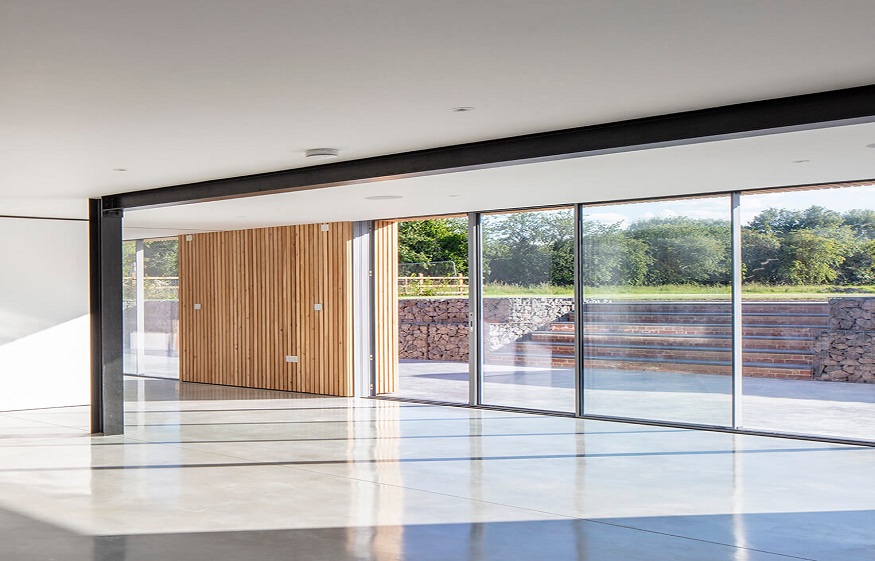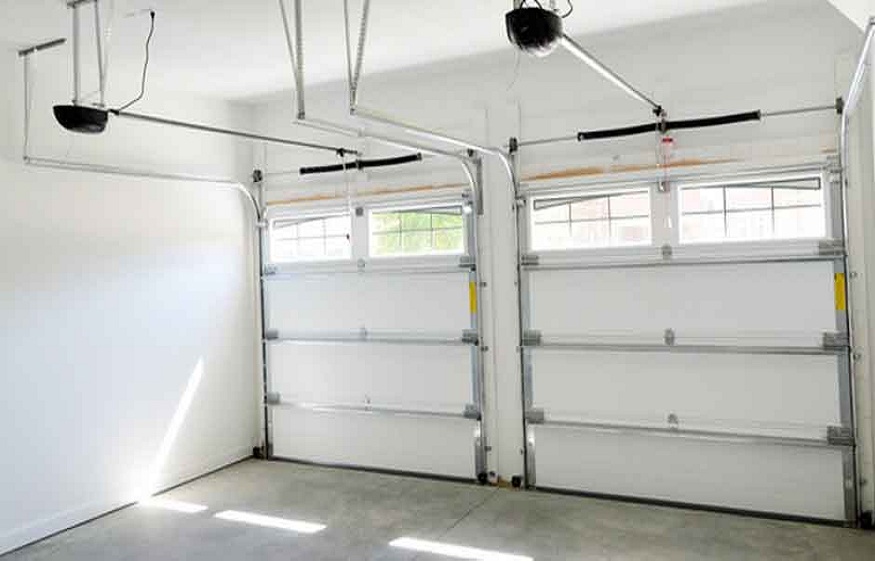What once belonged to the high street is now reshaping how British homeowners design their spaces. Slimline aluminium shopfronts—long favoured by cafés, galleries, and boutique retail units—have broken through the commercial boundary and are being reimagined for homes. This shift speaks to a broader design trend in 2025: crisp, minimal, light-maximising architecture that doesn’t compromise substance or sophistication.
The appeal is immediate. These systems are defined by their narrow sightlines, generous glazed spans, and sturdy yet elegant aluminium profiles. In retail, they’re chosen for transparency, access and presentation. In homes, they’re being celebrated for the same reasons. Homeowners are replacing traditional front porches, back doors and garden room facades with slimline glazing systems that create a seamless transition between indoors and out. It’s modern. It’s confident. And it transforms not only how a house looks—but how it feels to live in.
The most significant shift has been in ground-floor extensions. Rear-facing kitchen diners and side returns are increasingly wrapped in floor-to-ceiling glass with minimal black aluminium framing. The effect echoes shopfront minimalism, with slim mullions and uninterrupted views becoming the home’s focal point. It’s not unusual now to see what was once a solid wall opened up with slimline aluminium shopfronts, framing the garden like a contemporary show window.
Designers and architects have embraced the style for its light-maximising qualities and strength-to-weight ratio. Aluminium allows for large panels and tall openings without bulk. This isn’t just about aesthetics—homes using these systems gain measurable daylight, enhancing the experience of living, cooking, working, and relaxing. It also plays perfectly into the biophilic design movement: creating calm, connected spaces that feel grounded in their surroundings.
Another area where this commercial crossover is thriving is in the entranceways. Homeowners increasingly seek standout solutions for their front doors—regarding security and architectural presence. That’s where the aluminium pivot panel door comes in. Inspired by commercial entrances, these oversized doors pivot on a central axis, offering a wide opening, a soft glide, and an undeniably modern aesthetic. They’ve become particularly popular in large self-builds and premium refurbishments, where design continuity is key. And because they’re built from the same durable aluminium systems as commercial-grade shopfronts, they also offer impressive weather resistance and security credentials,
This evolution isn’t purely about style. It’s also about how modern homeowners want their spaces to function. More people are entertaining at home, working from open-plan zones, and expecting flexible, versatile rooms that adapt to them. Slimline glazing allows those boundaries to shift. On summer evenings, doors can disappear into stacked panels or slide across entire walls, opening living spaces into patios, terraces or gardens. The space still feels bright and open on grey winter days—even when closed. That sense of visual generosity makes a significant impact on day-to-day comfort.
Materials play a vital role here. Aluminium is not just strong—it’s sustainable. Many of today’s systems include high levels of recycled content and are designed for long-term use, meaning fewer replacements, lower embodied energy, and reduced waste. Unlike timber, plastic doesn’t warp; it doesn’t degrade under UV or extreme temperatures. It’s also a dream to maintain: a quick clean is all it takes to keep the frames looking as sharp as the day they were installed.
Aluminium has become the frame of choice for designers looking to future-proof appearance and performance. Nowhere is that more evident than in cutting-edge glazed extensions, where systems like the Cortizo sliding door are chosen for their sleek movement, exceptional efficiency, and high-end finish. Initially developed for premium commercial and residential developments, these doors are now making their way into private homes—and transforming them in the process.
This shift from the high street to the home has also brought about more considered choices in layout and detail. Gone are the heavy handles, thick frames, and clunky sightlines of older systems. In their place are concealed hardware, soft-close tracks, and even motorised operation for the most advanced configurations. What started in modern showrooms and corporate lobbies has become the design language of aspirational British living.
The shopfront aesthetic also perfectly complements other modern materials and finishes. Polished concrete, exposed brick, timber battens, and neutral stone sit comfortably next to black-framed glazing. The result is warm yet minimal, bold yet timeless. It gives a home a design-led feel without being too flashy—something increasingly important for homeowners who want style with longevity, not trends that date in a few years.
Functionally, it’s hard to beat. These systems are secure, thermally efficient, and made to last. Many homeowners now blend fixed panes, opening sections and corner returns into their plans to maximise flexibility. Others use full shopfront-style glazing in garden studios and annexes, making small spaces feel expansive. It’s a reminder that this is more than just a visual trend—it’s a new way to live.
As with all successful architectural features, execution is everything. That’s why companies like Direct Trade Windows are seeing growing demand for bespoke systems that combine shopfront-inspired aesthetics with residential detailing. Their expertise in supplying and adapting commercial-grade systems for domestic use has made them a go-to partner for designers and homeowners looking to achieve the look without compromising performance.
In 2025, homeowners are no longer satisfied with good enough. They want great design, lasting materials, and architectural features that elevate how they live. As more of us blur the lines between indoor and outdoor, work and life, public and private, the solutions we bring into our homes would be inspired by the best of both worlds.


